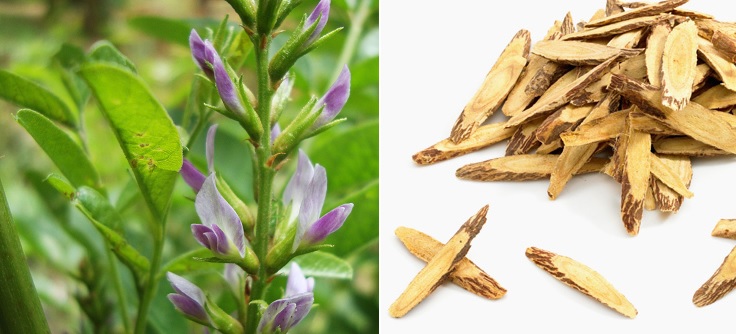Glycyrrhiza, Biological Sources, Morphology, Chemical Constituents, Adulterants Medicinal Uses and MCQ for GPAT
Liquorice
Synonym :- Jethi madh, Mulethi, Glycrrhiza
Biological Source :- Liquorice consists of peeled and unpeeled roots,stolons,stem of Glycyrrhiza glabra linn.
Family :- Leguminosae

Geographical Source :-
- Liquorice is grown in the sub-himalayan tracts & Baluchistan.
- It is cultivated on a large scale in Spain, Sicily and Yorkshire (England).
- The following are the three commonly grown varieties of Glycyrrhiza glabra namely :-
- G. glabra var. Violaceae (Persian Liquorice) :- This specific species bears violet flower.
- G. glabra var. gladulifera (Russian Liquorice) :- It has a distinct big stock together with a number of elongated roots but it has not got any stolon
- G. glabra var. typica (Spanish liquorice) :- This specific plant bear only purplish blue coloured papilionaceous flower.
Macroscopic Characteristics:-
Colour :- Unpeeled liquorice externally yellowish brown or dark brown & internally yellowish colour.
Odour :- Faint & Characteristics
Taste :- Sweet
Size :- length :- 10 to 50 cm Diameter :- 2 cm
Shape :- Unpeeled drug straight and nearly cylindrical
Microscopic Characteristics :-
- The T.S. reveals several yellow brown cork layer & a layer of phelloderm that is 1to 3 cell thick.
- The phloem exhibit group of phloem fibers which are surrounded by crystal cell with thick but incompletely lignified walls.
- The vessel are accompanied by xylem fibers, which are surrounded by crystal cell and by xylem parenchyma cells.
- The parenchyma cells contain starch grain and often contain single crystal of Calcium oxalate.
Chemical Constituents :-
- Glycyrrhizine (6-8%) [Sweet instant 50 time more than sucrose]
- Liquiritin and isoliquiritin are responsible for yellow colour.
- Glucose,sucrose,asparagin,gum,protein,fats,resins, traces of tanin.
- Glycyrrhizinic acid are produces glycyrrhitinic acid and glycyrrhitic on hydrolysis.
Identification Test :-
- When sulphuric acid (80%W/V) is added to a thick section of the drug or powder it is instantly produced a deep yellow colour.
Uses :-
- Expectorant,demulcent, flavouring agent, anti inflammatory, anti spasmodic, reliexing stress.
- Bronchial problem,cold, bronchitis,cough,anti Pyretic.
- Used in peptic Ulcer
Adulterant:-
- Glycyrrhiza uralansis also known as manchurian Liquorice, which is pale chocolate brown Colour in appearance having wavy medullary ray and exfoliated cork is mostly used as an adulterant for G.glabra.
- Sometimes the Russian Liquorice is also used as an adulterant because the drug is purplish in appearance has long roots but having no stolons.
Important Point: Liquorice are pentacyclic triterpenoid saponin.
LIQUORICE MCQ FOR GPAT,NIPER AND OTHER PHARMACEUTICAL COMPETITIVE EXAM
1. Which is following is not a use of Liquorice ?
A. Flavouring agent
B. Peptic Ulcer
C. Expectorant
D. Anti Parkinson’s
2. Which Chemical Constitution is responsible for yellow colour of Liquorice ?
A. Liquiritin
B. Iso Liquiritin
C. A and B
D. None of the above
3. Which sentence is false about Liquorice ?
A. It is belong to family leguminosae.
B. It is used in peptic Ulcer.
C. Russian Liquorice is purplish in appearance.
D. Liquorice is bitter in taste.
4. Liquorice is belong to class of saponin is
A. Tetracyclic triterpenoid saponin
B. Hexacyclic triterpenoid saponin
C. Dicyclic saponin
D. Pentacyclic triterpenoid saponin
5. Which of the following compound is 50 time more sweeter than sucrose ?
A. Saccharine
B. Liquiritin
C. Glycyrrhizine
D. Asparagin
6. Which Liquorice species has a bears violet flower ?
A. G. glabra var.gladulifera
B. G. glabra var.violaceae
C.G. glabra var. typica
D. G. glabra var.spanish
7. Liquorice is belong to family
A. Araliaceae
B. Solanaceae
C. Liliaceae
D. Leguminosae
Answer Key
1. D
2. C
3. D
4. D
5. C
6. B
7. D
Reference :-
16 edition of trease and evans Pharmacognosy ( pg.no.313 and 314)
Therapeutic benefits of liquorice in dentistry
https://www.sciencedirect.com/science/article/pii/S0975947617305107